When you start keeping angelfish, your fish’s food habit and diet is something that might concern you a lot. Usually, the questions most aquarists struggle with are how, when, and what to feed fish for longer and healthier life. So, if you too have these beautiful fish, you might be worried about what angelfish eat and what to give them.
Angelfish are omnivores. So, these beautiful fish will eat everything from live foods to pellets and flakes. You can even give your fish blanched and boiled vegetables time and often. Furthermore, your little babies can also eat frozen food like brine shrimp, daphnia, and bloodworms.
As you see, your angelfish can eat anything. But this does not necessarily mean you should give them whatever you find in your kitchen. Therefore, today I will discuss what angelfish eat in detail so that you can understand what and how to feed your fish for a better life.
Do Angelfish Like To Eat?
Well, if you have an angelfish, I am sure you will better answer this on your own. Mostly, angelfish are voracious eaters and love to eat. Furthermore, being omnivores, these beautiful fish will munch on anything and everything.
You can give your angelfish live foods, frozen foods, pellets, flakes, and vegetables. And these fish will eat them all. Moreover, angelfish are so fond of eating that these fish usually do not know when to stop. As a result, your little guys mostly tend to overeat.
However, angelfish do love to eat. But there are, of course, a few species of angelfish that are picky. Besides this, some angelfish are fussy eaters and do not like to try new foods.
Generally, since angelfish like to eat, it might be for some other reason if you find your fish avoiding food. For example, maybe the water quality is poor, or your angelfish are not feeling well. So, be cautious about these things too.
What Do Angelfish Eat?
As mentioned, angelfish are omnivores so these beautiful fish will eat almost everything. However, this does not mean that you can feed them anything. There, of course, are some exceptions that can be very harmful to your angelfish’s health.
But moreover, you can give your angelfish anything from veggies, flakes, pellets, live foods, freeze-dried foods, and frozen foods. I usually like mixing it up, so my angelfish don’t get bored eating the same thing every day.
A good diet for angelfish should contain the following:
Veggies
Angelfish are not exactly a fan of vegetables. But your little guys need some vegetables for a healthy and balanced diet. So I usually chop the veggies into small pieces so my angelfish can eat them easily. Besides this, boiling or blanching the vegetables can make them more enticing for your angelfish.
Some good vegetables for angelfish are zucchini, peas, broccoli, spinach, and cucumber. You can also give them other leafy greens like romaine lettuce and kale. Just remove the lettuce from the tank after a few hours because it can decompose and dirty your tank quickly.
Flakes/Pellets
Most fishkeepers use flakes or pellets as the main diet for their angelfish. And there’s a good reason for that. Flakes and pellets are packed with nutrients and vitamins essential for your angelfish’s health. They are also very easy to digest, which is great for angelfish with sensitive stomachs.
When it comes to pellets, I recommend getting the ones that are specifically made for large tropical fish. These pellets usually sink to the bottom of the tank, which is perfect for angelfish since they are bottom-dwellers.
As for flakes, I recommend getting a high-quality brand that is also made for large tropical fish. These flakes will usually float on the water’s surface, which is great for angelfish since they often feed at the top of the tank.
Omega one pellets are one of the best ones out there.
Live Foods
Angelfish are also known to be very enthusiastic eaters of live foods. Some good live foods for angelfish include bloodworms, mealworms, white worms, brine shrimp, daphnia, and black worms. Live foods are a great way to add variety to your angelfish diet.
Besides this, live foods are also a great source of protein, which is essential for your angelfish’s growth and development.
Just make sure to feed your angelfish live foods as a treat because they can be very addictive. If you overfeed them, live foods can also dirty your tank quickly and lead to obesity. Technically, it is best to feed your angelfish live foods only once a week or two.
- Ocean Nutrition Instant Baby Brine Shrimp 0.7-Ounces (20 Grams) Jar
- Omega One Freeze-Dried Blood Worms, 0.96 oz
- 200 Live Daphnia by Aqua L’amour
Freeze-Dried Foods
Freeze-dried foods are another great option for angelfish. The main difference between freeze-dried foods from other foods is that the water has been removed. This means that these foods are very lightweight and easy to digest.
Some good freeze-dried foods for angelfish include bloodworms, brine shrimp, krill, and daphnia. Freeze-dried foods are also a great way to add variety to your angelfish diet. However, it would help if you carefully feed them because they can expand your angelfish stomach and cause problems.
- Hikari Bio-Pure Freeze Dried Daphnia for Pets, 0.42-Ounce
- Hikari Tubifex Worms Fish Food (0.7 oz.) [Set of 2]
Frozen Foods
Last but not least, frozen foods are also a great option for angelfish. The main advantage of frozen foods is that they are usually very affordable. In addition, you can find a lot of variety when it comes to frozen foods.
Some good frozen foods for angelfish include bloodworms, brine shrimp, krill, daphnia, and Mysis shrimp. This food can be a great addition to your angelfish diet and provide them with the necessary nutrients. Just make sure to thaw the food properly before feeding it to your angelfish.
As you can see, there are a lot of different options when it comes to feeding your angelfish. The most important thing is to create a varied and balanced diet for your little guys. This will ensure that they stay healthy and happy!
Do you have any questions about feeding angelfish?
What Do Angelfish Fry Eat?
As with any other animal, the diet of an angelfish fry will vary depending on its stage of development. For the first few weeks of their lives, angelfish fry will live off of their yolk sacs. Once they’ve exhausted their yolk sacs, they’ll need to feed on small live foods such as baby brine shrimp or micro worms.
As the fry grows older and larger, you can start offering them larger live foods such as bloodworms or adult brine shrimp. Eventually, this fry will be able to eat pellets or flakes designed for adult angelfish.
It’s important to note that angelfish are prone to malnourishment if you do not provide them with a varied diet. So it’s important to give them a variety of foods to ensure your fry is growing well.
How To Know Your Angelfish Is Not Eating Enough?
Angelfish are shoaling fish, so that you might have at least six of them in your tank. In this group, it isn’t easy to know whether the food you are serving them is enough or not. However, there are a few things you can look out for:
- If an angelfish is not eating, it will become pale, and its fins might droop.
- An angelfish not eating enough will also have a protruding belly.
- Your fish might be stressed if it is not getting enough to eat, so look for signs of stress, like hiding or darting around the tank.
- An angelfish not getting enough to eat will also reduce appetite and might not be as active as usual.
If you notice any of these signs, it is important to take action immediately and figure out what is causing the problem. It could be several things, from stress to disease.
One way to ensure your angelfish are getting enough to eat is to feed them small meals throughout the day instead of one large meal. This will help them digest their food better and get all the necessary nutrients. You can also try different types of food to see what your angelfish prefer.
How Much Food Do Angelfish Need?
Usually, angelfish are fast-growing fish that needs a lot of food. Therefore, you need to feed them small amounts of food several times daily. It is best to feed them live or frozen food that has been thawed. Brine shrimp, bloodworms, and daphnia are all good choices for angelfish.
Moreover, you can feed your angelfish about three to four times a day. You can give them live food, frozen food, or pellets. It is best to vary their diet to get all the necessary nutrients. Furthermore, the food requirements and amount usually differ depending on the type of angelfish.
For example, freshwater angels need more protein than saltwater angels. As a result, you should give them different food. Also, juvenile angels need more food than adults since these fish grow quickly. Therefore, you can give them smaller meals more often or larger meals less frequently.
How Long Can Angelfish Go Without Food?
Angelfish are known to be able to go without food for up to two weeks. However, it is not recommended that you withhold food from your angelfish for this long as they will begin to lose their color and become lethargic.
The period up to which angelfish can live without food usually depends on the size of the fish. Smaller angelfish can go without food for shorter periods than larger ones. In addition, healthy angelfish that are well-fed can go without food for longer periods than those that are not.
However, I usually do not recommend keeping your angelfish without food. If you need a vacation or are going out of town, it is best to ask a friend or family member to feed your fish while you are gone.
What Do Angelfish Eat In The Wild?
In the wild, angelfish are opportunistic feeders and will consume just about anything they can fit into their mouths. This includes small invertebrates, algae, other plants, and even smaller fish. In short, their diet is quite varied and depends on what’s available in their environment.
The usually food that angelfish will eat in the wild are:
- Small insects
- Zooplanktons
- Algae
- Other small invertebrates
- Smaller fish
- Wild Plants
Moreover, Angelfish are not fussy eaters and will consume just about anything these fish can fit into their mouths.
Do Angelfish Eat Corals?
Usually, in the wild, angelfish live around coral reefs where coral is abundant. This means these fish will have plenty of opportunities to feed on coral. However, angelfish are not picky eaters and will consume most types of coral.
The type of coral that an angelfish eats will depend on the species of angelfish. Some angelfish species specialize in eating a certain type of coral, while others are more generalists and will eat many different types of coral. So, the common types of coral that angelfish eat are:
Hard Corals
These corals have a hard exoskeleton made of calcium carbonate. Angelfish use their strong jaws to bite off small pieces of these corals. Some examples of hard corals that angelfish eat are staghorn coral, brain coral, and elkhorn coral.
Soft Corals
These corals have soft bodies and are not as common in the wild as hard corals. However, some angelfish will still feed on soft corals. Angelfish use their small mouths to suck the tissue off of these corals. Some examples of soft corals that angelfish eat are leather coral and anemones.
Zoanthids
These corals are related to soft corals but have a hard exoskeleton. Zoanthids are common in the wild and are a favorite food of many angelfish species. Angelfish use their small mouths to suck the tissue off of these corals. Some examples of zoanthids that angelfish eat are button polyps and brain coral.
Coral is a good food source for angelfish because it contains many nutrients that these fish need. Mostly, coral is also high in calcium, which is important for developing and maintaining an angelfish skeleton.
Do Angelfish Eat Algae?
One of the most common questions people ask about angelfish is whether or not these fish eat algae. The answer is yes! Angelfish will often graze on algae that grow on rocks and other surfaces in their aquarium. This helps keep the water clean and provides them with a food source.
Algae are a type of plant that grows in water. There are many different types of algae, and they can be found in various colors. Some types of algae that angelfish may eat include:
- Fuzzy algae
- Green algae
- Brown algae
- Red algae
- Blue-green algae
- Diatoms
Of course, not all angelfish will eat every type of algae. Therefore, it is important to experiment with different types of food to see what your angelfish will and will not eat. You may find that your fish prefer one type of algae over another.
In addition to eating algae, angelfish will also consume other plant matter. But what types of plants do angelfish eat?
Do Angelfish Eat Plants?
Yes, angelfish do eat plant matter. They are omnivores, meaning they will consume plants and animals as part of their diet. The plant matter that angelfish consume typically comes from algae or other aquatic plants.
Moreover, a large part of an angelfish’s diet comes from the algae that grow on rocks and other substrates in their natural environment. Moreover, the types of plants your angelfish can eat are:
- Seaweeds
- Kelp
- Corals
- Hornwort
- Anacharis
- Water sprite
- Sponges
Do Angelfish Eat Meat?
Angelfish are opportunistic predators and will consume small fish, crustaceans, and insects if available. In the wild, most of an angelfish’s diet consists of smaller fish, shrimp, and crabs.
While in captivity, frozen or live foods such as brine shrimp, Mysis shrimp, and bloodworms are commonly fed to angelfish. It’s important to offer a variety of meaty foods to ensure your angelfish are getting the nutrients they need.
What Do I Feed My Angelfish?
A good captive angelfish diet should consist of plant and meaty foods. A variety of frozen and live foods should be offered, as well as quality flake or pellet food. Angelfish are known to be finicky eaters, so it may take some trial and error to figure out what your fish will like.
One of the most important things to remember when feeding angelfish is not to overfeed them. These fish have small stomachs, so they can only eat a little at once. Therefore, feeding them several small meals throughout the day is better than one big meal.
Another thing to keep in mind is that angelfish are messy eaters. So, these fish will often leave food behind, which can pollute the water if not removed quickly. To avoid this, use a siphon to clean up uneaten food after each feeding.
Do Angelfish Eat Their Babies?
Most often, angelfish do not eat their babies. However, baby angels are often eaten by other fish or predators in the wild, so it’s important to provide plenty of hiding places in the aquarium for the fry. Once these fish are big enough to defend themselves, they can be added to a community tank.
However, if your angelfish is stressed, it may eat its babies as a way to cope. This is usually a result of poor water conditions or not enough food. If you suspect your angelfish is eating its babies, check the water quality and ensure there’s enough food in the tank. You can also try adding more hiding places for the fry.
Conclusion
In conclusion, angelfish are not difficult to care for as long as you know what these fish need and are willing to provide it. A healthy diet for angelfish includes a variety of living, frozen, and freeze-dried foods along with some high-quality pellets or flakes. Be sure to offer different types of food at each feeding, so your angelfish get the nutrients they need to stay healthy and thrive. Thanks for reading!
Do you have any questions about what angelfish eat?
Leave a comment below, and I’ll do my best to answer it!
And if you found this article helpful, please share it with your friends using the buttons below. Thanks! 🙂

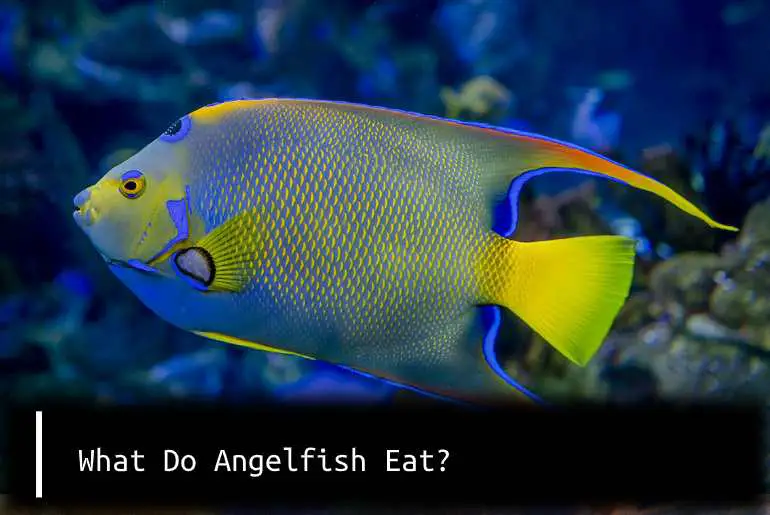

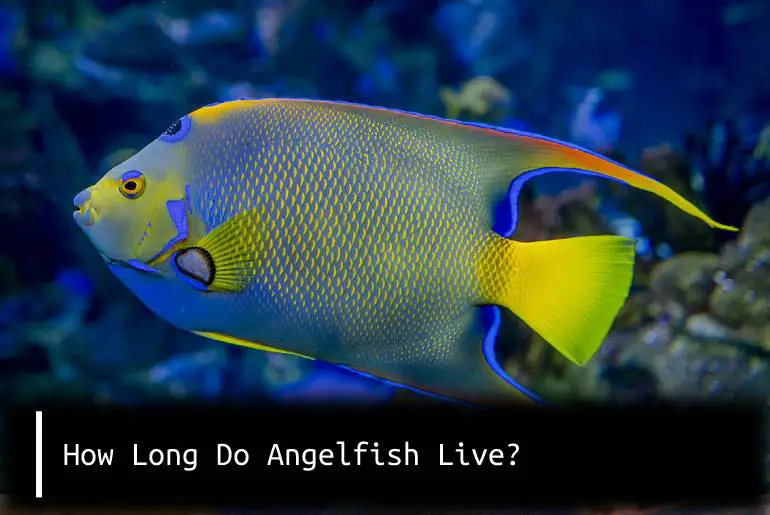
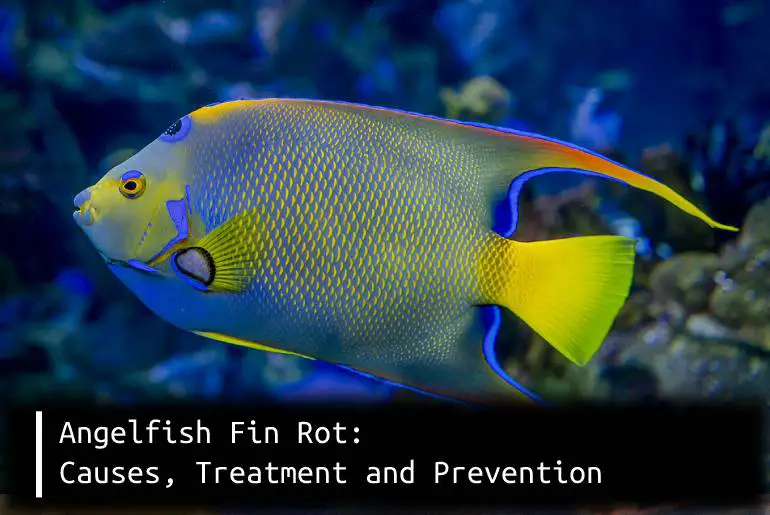
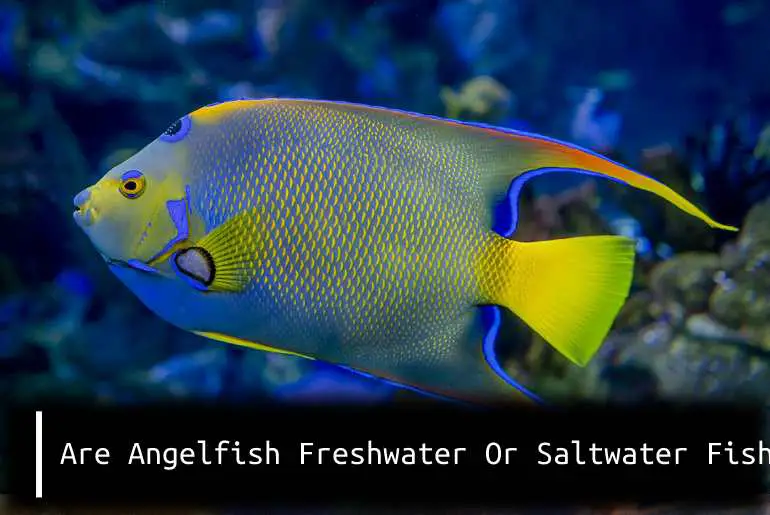
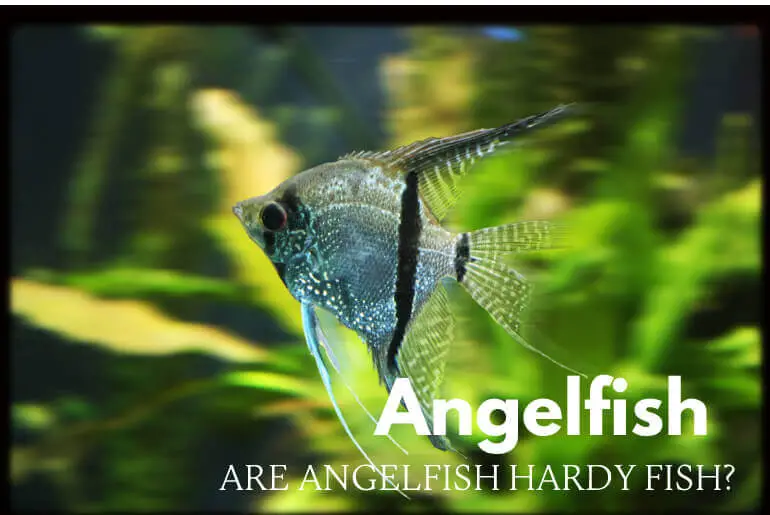
Pingback: 9 Reasons Why Angelfish Is Dying? - Fish Keeping Guide